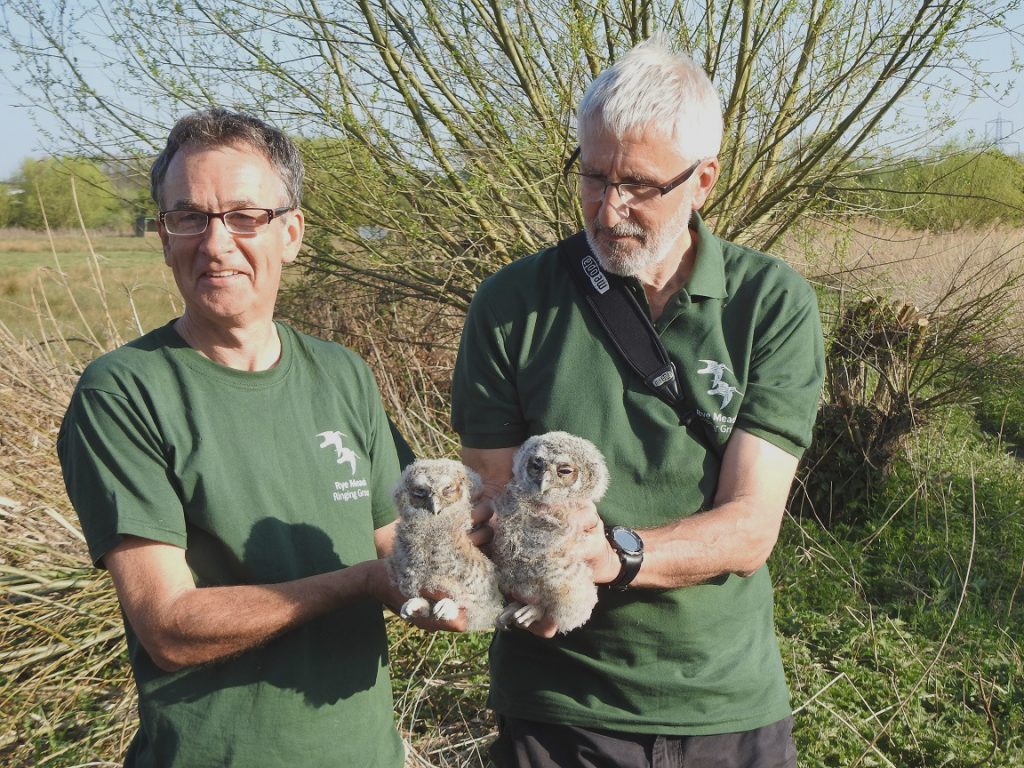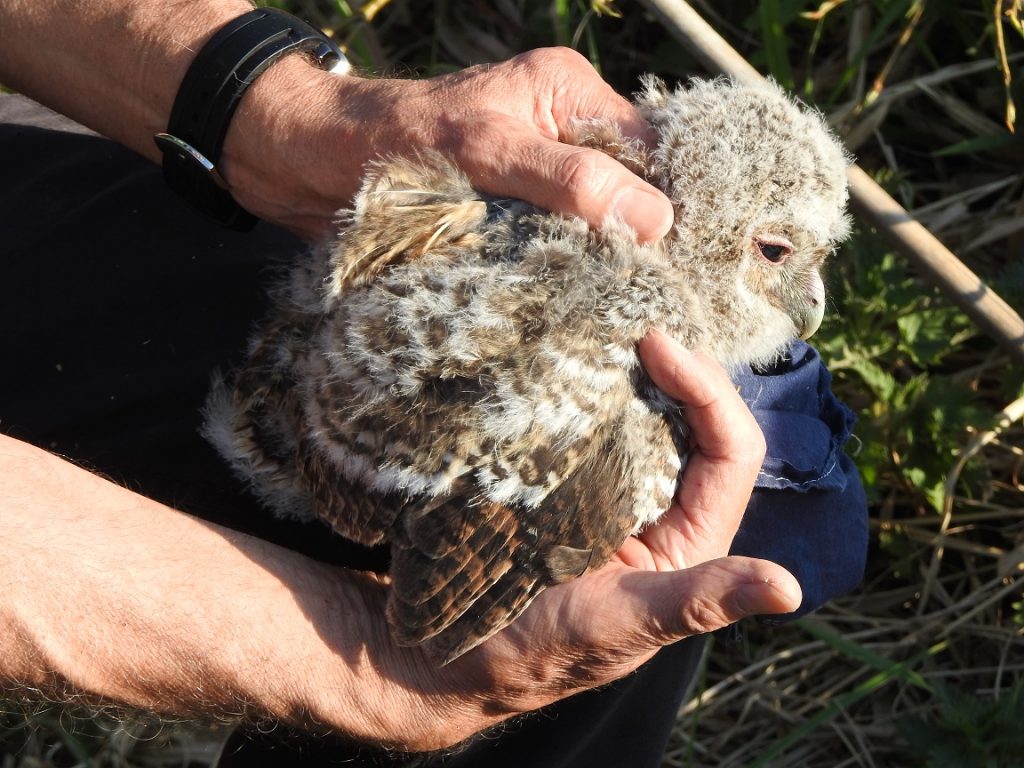Recent activities

Gordon Duns and Roger Emmens were the lucky ringers (Adam Wilson)
A close encounter with Tawny Owlets
Roger Emmens reports on the ringing of our latest brood of Tawny Owls at Rye Meads
Owls are fascinating birds with all sorts of unusual features. They are nocturnal predators with extraordinarily acute hearing, hence the facial discs that act as parabolic reflectors for their ears. They have almost silent flight, partly to avoid detection by their prey, partly to enable themselves to listen better for prey. When perched, they flex their feathers as they breathe, so their outline shows no movement. They have large eyes for excellent low light vision, but this means they cannot move them in their sockets, so to compensate they have necks that can rotate through almost 180 degrees. And then there’s the feet: four equal toes in a cross formation, two forward and two back, a formation known as Zygodactyly and shared with woodpeckers, cuckoos and parrots.
Since a pair of Tawny Owls decided to nest in the triangular box beside the Scrape, visitors to the Draper Hide have enjoyed seeing the parents often sitting outside the entrance in broad daylight, giving better views of this species than is normally possible. Consequently we all eagerly anticipated going to ring the youngsters. This weekend the owlets had reached just the right age, and a large group from RMRG and the RSPB staff came along to watch.

These owlets were unbelievably cute, with the engaging habit of snapping their beaks the whole time, so they click like mechanical toys. Their down was incredibly soft and, unlike Barn Owl chicks, not foul smelling.
The wing feathers are growing fast, and you could see the soft fringes on the primaries that give these birds their silent ‘stealth bomber’ flight.
One bird was noticeably larger than the other. With most birds, as the mother usually lays one egg a day, they don’t start incubating until the clutch is complete, so that the first eggs don’t begin to develop until the last egg is laid, and consequently all the brood hatches at about the same time.
With Owls, the first egg is incubated as soon as it is laid. The second is normally laid about two days later, and if there is a third, another two days after that. The differing ages of the chicks means that if food is hard to find, the largest chick is fed most, and the smallest chick may end up starving, so that the chances of at least one chick fledging is increased. Nature can’t afford to be sentimental. In our case, however, both chicks looked vigorous and healthy.
After a photocall, the clicking chicks were put back in their box. It’s days like this that make it such a privilege to be a ringer.

[…] Two years ago, Tawny Owls nested in one of the garret-shaped nestboxes at the side of the Scrape, and gave some fantastic views to visitors in the Draper Hide. We were able to show the owlets to some of the RSPB volunteers one evening when we went to ring the chicks – see our post A Close Encounter with Tawny Owls. […]